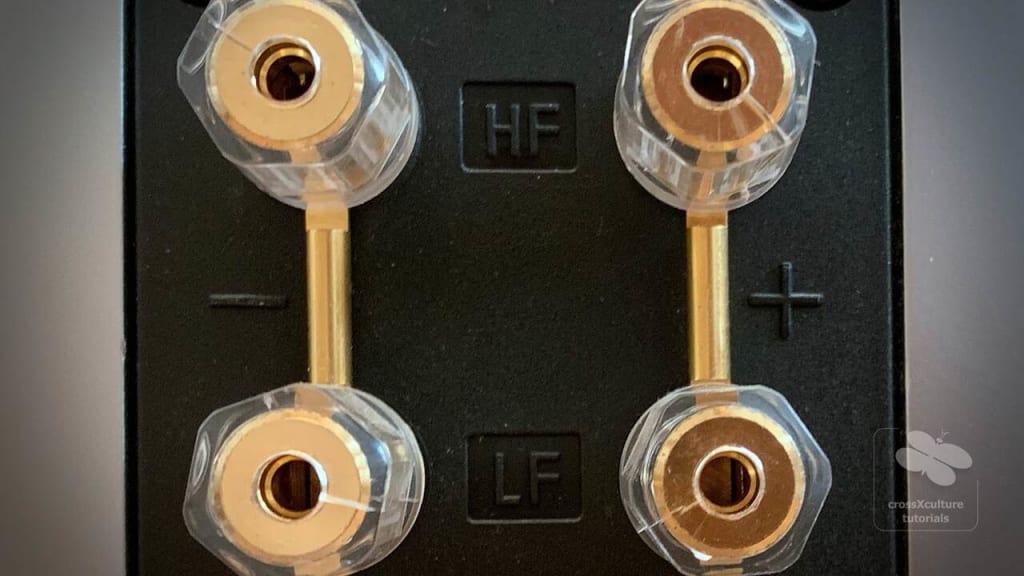10. Speaker terminals
Published: 05/05/2020
Author: Karsten Hein
Category: High Fidelity
Most modern HiFi (mid-market to High End) speakers feature terminals equipped for the connection of two separate sets of speaker cables. This allows separate connections to be made to the tweeter (highs) and woofer (lows) drivers of each speaker. Such terminals usually come with a bridge between them to enable connections with a single cable. When the speaker terminals are driven with two separate cables, the bridge must first be taken out, and the configuration is called bi-wiring. When two amplifiers are used, e.g. one amp driving the tweeter and the other the woofer, this is called bi-amping.
Bi-amping is for instance used when a low power tube amp is to drive the high to mid section, with a beefy solid state power amp driving the bass section. However, bi-amping presents the most difficult issues to solve in trying to maintain coherence and will prove to be inferior to a conventional setup, unless we really know how to professionally phase align and fine tune such systems. The more likely option is bi-wiring or using a single cable with a bridge.
Of the three options mentioned above, I have had the most success bi-wiring with a single point of contact on the side of the amplifier. To do so, I had to design cables with two banana plugs on the side of the amp and four plugs on the side of the speaker. Of course, such cables can be bought preconfigured, but it is obviously not as much fun.
The single point of contact on the side of the amplifier makes for excellent sonic cohesion. Bi-wiring on the side of the speaker, however, carries each driver’s back-current straight to the amp terminal, without affecting the other drivers. Ideally, the wires split apart directly from the banana plug connected to the amp, with the two cables running in parallel over the distance to the speaker. This also elegantly increases the diameter without sacrificing the responsiveness of a lower diameter wire.


